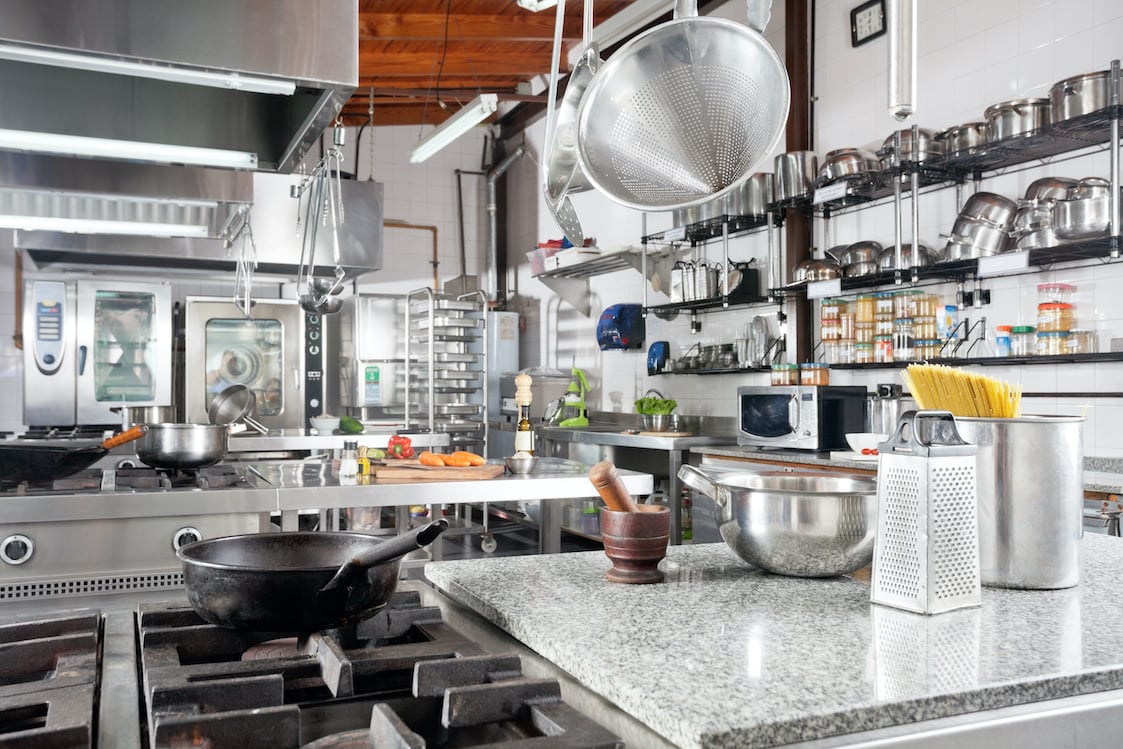Call Sales: +1 (833) 437-3835
Call Sales: +1 (833) 437-3835

Restaurants typically open out of an owner or chef’s passion for food, drink, and hospitality. However, restaurants only remain open as a result of strong business acumen and planning.
A common statistic from a Cornell University study is that 60% of restaurants fail in their first year, and 80% close down in five years, so here’s a checklist of items to consider in order to open your restaurant doors and keep them from closing:
The first part and the fun part about starting a restaurant business is developing your concept. What type of food will you serve and what does your beverage program look like? What kind of ambiance and experience do you want to create? Who is your target market? These are just some of the questions you need to answer as you create your restaurant concept and draft your business plan.
Next, to get your business plan off the ground, you’ll need to secure opening and operating capital. This can come in many forms from a small business loan, to seed money from family and friends, to earnings from a restaurant pop-up, to funds from investors. Depending on the scale and segment of your restaurant, there will be different financing requirements. It is important to allocate opening budget with some contingency, as well as set aside operating capital for once the restaurant is up and running.
The next step is to explore the competitive landscape and select a site for your restaurant. It needs to be in an area that is accessible, provides appropriate zoning, and reaches the target market for your concept. Once you’ve selected your site, negotiate your lease, which then determines your rent. This is particularly important as this will be your highest overhead cost.
Design is the next key consideration in opening a restaurant. You need to allocate the appropriate amount of space to front of house, back of house, and administrative areas so your restaurant can operate efficiently and maximize revenue. Your front of house is where you generate all of your revenue. This can be forecasted and evaluated on a revenue per available seat basis. More seats equal more revenue, as long as your kitchen has enough space for the appropriate equipment and can produce enough volume to serve your guests. Purchasing furniture, fixtures, and equipment are also important aspects of design. Based on your budget, you may want to purchase some brand-new equipment and consider buying some used items to drive down costs.
Code compliance is essential if you want to have a working kitchen and serve guests. Regulations can vary from state to state, however, the certificates on your checklist should include a business license, a building license, a food safety certification, a liquor license, and potentially a sidewalk dining permit. It’s also very important to understand OSHA regulations and always be prepared for surprise inspections from the department of health.
In order to operate your restaurant efficiently, you need to evaluate your menu and how that translates to your inventory management and food cost analysis. Inventory management includes having enough ingredients on-hand, making sure you have not over-ordered and created food waste. Good inventory management allows you to forecast and manage operating expenses successfully. When planning your menu, you also need to consider how much ingredients cost and by what percentage you are going to mark-up each dish in order to turn a profit. Understanding the synergies between these two principles is key in lowering costs and increasing revenue so you can keep your restaurant business operating and moving toward profitability.
Hiring and training your opening team is another step in opening your restaurant doors. Some team members, such as GMs and beverage directors, should be hired for their industry experience and expertise, while others should be selected for their attitudes and the level of customer service they will provide your guests. Making sure you have a strong staff that can deliver a consistent dining experience is key to the longevity of your establishment.
Another item on your restaurant opening checklist is implementing your technology ecosystem. This consists of your reservations platform, your POS, your online ordering service, and more. This should be a priority on your checklist, as the technology you choose can help you generate revenue and optimize efficiencies - key items in helping your restaurant stay open in the long term.
In your restaurant business plan, Marketing & PR should play an important role. It's a great way to spread the word about your business as well as interact with your guests online. In this digital age, you should set up a website, claim your business on Google and Yelp, as well as set up social accounts on Facebook, Instagram and Twitter. Working with press can also help your business grow. Positive reviews or mentions from notable and popular media such as Zagat, The Michelin Guide, eater.com, Thrillist, or The Infatuation can help continually bring new guests into your restaurant.
Opening a restaurant certainly requires a lot of passion, blood, sweat, and tears. It requires dedication and attention to a whole checklist of considerations, and it’s harder in practice than it is in theory. However, all of the hard work certainly pays off when you see your concept come to life.